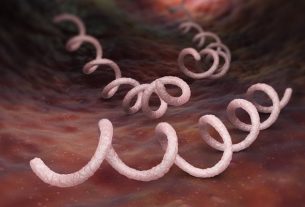In most cases, there is no cure for a herniated disc, however, it is possible to reduce inflammation and alleviate all symptoms, allowing the person to return to a completely normal life.
The only way to cure a herniated disc is surgery, which removes the part of the disc that is being pressed. However, this surgery has several risks and as it is almost always possible to eliminate symptoms with physiotherapy and rest, most doctors prefer not to recommend surgery.
Physiotherapy is, therefore, the main treatment for herniated discs. Understand better in this video how the treatment of herniated discs works:
How physiotherapy is done
Physical therapy for herniated discs varies depending on each person’s symptoms and limitations. Initially, it is necessary to treat the pain, inflammation and local discomfort, and to achieve this objective several sessions of passive physiotherapy may be necessary, with the help of devices and the use of anti-inflammatory medications prescribed by the doctor.
When these symptoms are eliminated, the person can now perform another, more intense type of physiotherapy and combine osteopathy sessions and global postural re-education (RPG) techniques, pilates or hydrotherapy, as a way of keeping the intervertebral disc in its place, which has demonstrated good results in reducing symptoms.
Physiotherapy sessions should preferably be carried out 5 days a week, with rest on weekends. The total treatment time varies from one person to another, as, while in some cases it is possible to alleviate symptoms in 1 month of treatment, others require more sessions, depending on the severity of the injury.
See more details on physical therapy treatment for herniated discs.
When surgery is recommended
Surgery to treat a herniated disc is normally only indicated for very serious cases, in which the intervertebral disc is severely compromised, to the point that treatment, with the use of medication and physiotherapy, is not enough to alleviate the symptoms.
This surgery is performed by an orthopedist or neurosurgeon, under general anesthesia, in a procedure that removes the affected intervertebral disc. This procedure can also be done laparoscopically, in which a thin tube is inserted into the skin with a camera at the end.
The hospital stay is quick, generally 1 to 2 days, but it is necessary to rest for about 1 week at home, and the use of a collar or vest may be recommended to maintain posture during this period. More intense activities, such as physical exercise, are permitted 1 month after surgery.
See how the surgery is performed, what the recovery is like and what the risks are.

Sign up for our newsletter and stay up to date with exclusive news
that can transform your routine!
Warning: Undefined array key "title" in /home/storelat/public_html/wp-content/plugins/link-whisper-premium/templates/frontend/related-posts.php on line 12
Warning: Undefined array key "title_tag" in /home/storelat/public_html/wp-content/plugins/link-whisper-premium/templates/frontend/related-posts.php on line 13





